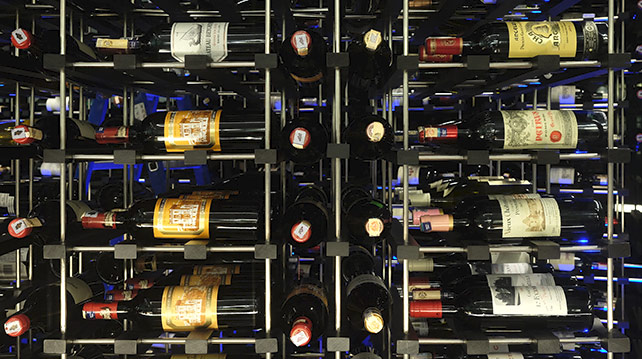Have you always wondered what type of wines are suitable for ageing? How do we age them and when is the optimal time to drink the aged wine?
We asked Sam Stephens about bottled wine ageing and the conditions the wines should be stored in. Stephens is the Asia Brand Ambassador for Penfolds, a brand that is a pioneer in making wines for ageing.
What type of wine is suitable for ageing?
According to Stephens, not all full-bodied wines are suitable for ageing. They must also have elements such as acidity, tannins and complex flavours that can develop and evolve over time. A full-bodied wine that is simple and fruity is best enjoyed young. He adds that all the wines in the Penfolds 2020 Collection are premium, complex and capable of ageing.
What is the optimal temperature for ageing?
“A constant temperature of 18 degrees Celsius (or less) is better for your wine,” said Stephens.
The cellaring conditions need to be dark, free from vibrations and from any background odours which may permeate through cork.
As the temperature in Malaysia is always hot and humid, Stephens suggested that a wine fridge would work just as good as a wine cellar as it is designed to store bottles in the optimum temperature for maturation. The best tip is to keep the wine steady and to avoid any significant temperature fluctuations.
When is the best time to open a bottle of aged wine? Could it ever be “over-aged”?
“No wine can live forever,” is the take from Stephens. He went on to emphasise that although all wines have a finite time for ageing and will reach a point where all the enjoyable flavours have gone, usually the higher the quality the wine, the slower it evolves.
Being able to identify the right time to drink a cellared wine is a combination of learning your own tastes by trying young and old wines. Stephens’ advice is to read reviews and tasting notes to understand how a wine develops and what its lifespan is.
He also stressed that the taste of wines depends a lot on personal taste. If you prefer younger and more fruit driven wines then it is best to consume them in the earlier part of their life; whereas if you prefer your wines more mature and with evolved flavours, then cellaring is for you.
Where is the wine drinking trend moving towards in Asia?
Stephens feels that the trend is going to be drinking less but better or more premium quality wines.
“In the wine world you can definitely taste the difference if you step up in price and quality and I think this is really catching on. I think that more people are choosing to drink one high quality bottle like BIN 389 rather than two cheaper ones like BIN 28 at home, or ordering a premium glass of BIN 407 served via Coravin instead of house wine in a restaurant. I think this will lead people to experiment by looking for more premium options with better grapes, wine making and provenance,” Stephens nicely summed up.
We asked Stephens how Penfolds' Bin 389 (affectionately known as the Baby Grange) has developed from 60 years ago and what the winery has learned and changed in this varietal over the years.
“The core style of BIN 389 has not really changed from when Max Schubert first created it in 1960. Our winemakers always consider themselves the custodian of our wines, protecting their heritage, style and quality above all else,” said Stephens.
“Of course, over the 60 years since Bin 389 was first created, our vines have gotten older and winemaking techniques have improved, so the modern vintages may be slightly more refined and better, but the essence that made BIN 389 so popular over the last 60 years remains unaltered.”
This year, Penfolds is celebrating 60 years of the Bin 389, a wine where each vintage has been aged in barrels that held the Grange (Bin 95) of the previous year. You can read about their 2020 collection here.
- T -
